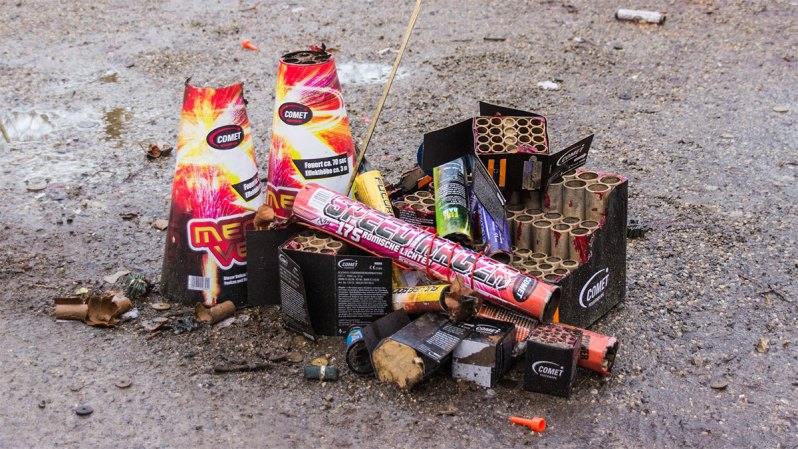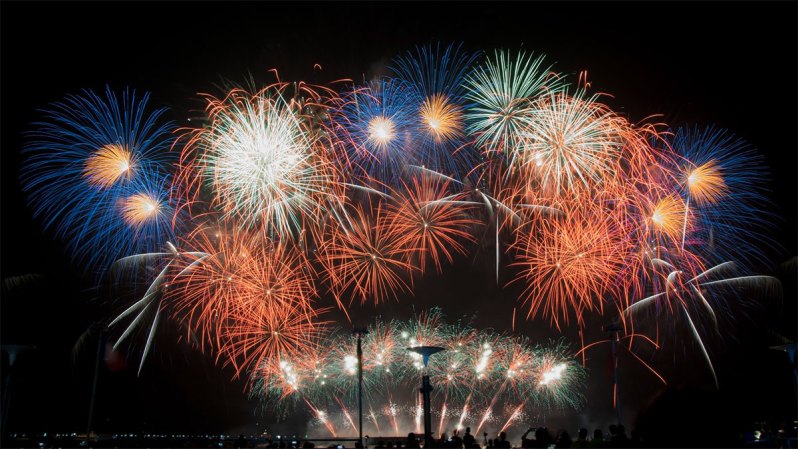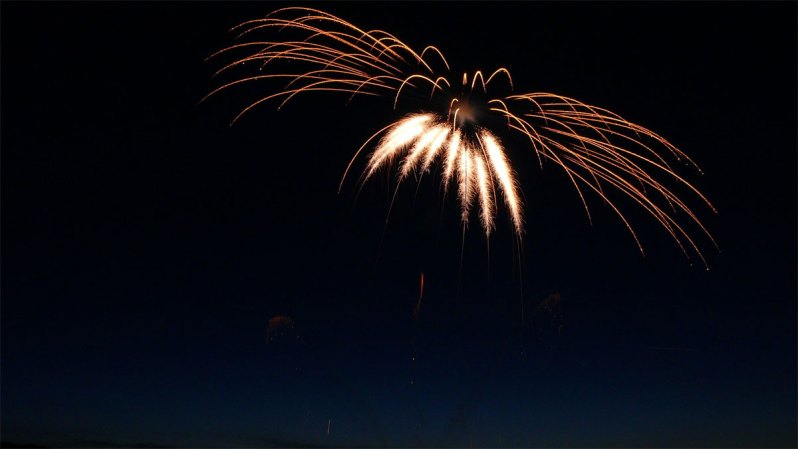Every year, happy Independence Day revelers spark up over 200 million pounds worth of fireworks. Most everyone has seen a firework display, but unless you deal in pyrotechnics for a living, you may not know much about the science or design behind them. With the 4th of July fast approaching, we decided to burn through some research and find out more about what makes all your favorite types of fireworks work.
Related:
A brief history of fireworks
best non-fiction
What’s In a Firework?

From firecrackers to fountains, every type of firework is composed of the same basic ingredients:
Stars: the compound mixtures that create effects
A Shell: a spherical container that holds the Stars
Black Powder: the propellant that ignites to create hot gasses
A Bursting Charge: a charge in the middle of the firework that ignites the Stars
A Mortar: the outer tube that holds the firework
A Fuse: the part that initially gets lit, which allows a time delay before the full explosion
The arrangement and final look of different fireworks can vary, but in each type the basic reaction is the same: the fuse is lit and the resulting ignition of the black powder and bursting charge creates incredible heat and gas that launches the firework out of the mortar and up into the air, where the stars burst to create the mesmerizing colors and designs that light up Independence Day celebrations across the country. Essentially, how fireworks are made all comes down to combustion.
Science Creates Color and Effects

So we know the basic structure of a firework and what makes them tick (er, boom), but what’s responsible for all those bright, bursting colors? Well, the short answer is: science.
Colors are achieved in fireworks by combining specific metal elements and compounds so that the resulting reaction creates a specific color. Barium, for example, creates a brilliant green effect. Strontium gives sparks a red hue, while Sodium results in shimmering gold fireworks. Magnesium can be used to create a stunningly bright white color, or to enhance the overall brightness of other shades. A lot of careful work goes into creating the mixtures that add your favorite colors to fireworks, with some shades – like blue and violet – being quite difficult to create because of the precise ratios of compounds used.
All that Periodic Power doesn’t stop at color, either – different elements are also used to create specific effects, like deeper colors (Calcium) or extra smokiness (Zinc). Aluminum is used for sparklers, Antimony gives a glittery shine, and – awesomely enough – phosphorous results in an almost eerie “glow-in-the-dark” effect. In some fireworks, chemicals like perchlorate are used to create popping or whistling sound effects.
What You Pack is What You Get

Your standard sparkler, fountain, or starburst is pretty neat, but if you attend a public fireworks display or 4th of July event, you’re likely to see some real show-stoppers, like fireworks that create specific patterns or have multiple effects.
For fireworks that create patterns in the sky – say, a heart or smiley face – the method is a lot simpler than you might think. The Stars are arranged on a piece of cardboard in the desired pattern inside the firework. By adding individual charges to each Star, and using a layer of break charge to separate the full pattern from the rest of the firework, the Stars maintain their pattern as they burst up and outward into the night sky. Star arrangements can vary from simple and relatively random to carefully calculated designs that create beautifully complex patterns when they explode.
Some fireworks have multiple explosions, combining several bursts and effects in one Mortar. These advanced designs can be composed of Shells-within-Shells or have several sections with their own fuses, so that when the first bursts, the next is ignited. You can spot these multi-break designs in displays by looking for fireworks that have a rapid succession of bursts or visual effects like large, stretching starbursts with smaller, tighter bursts at their center. In every type of complex or professional level firework, timing is everything: if one fuse is missed, the whole effect can be ruined.
At the heart of every firework is the same basic reaction, but the elements, compounds, design, and arrangement all have to come together perfectly to create the unique designs and effects that we know and love. The 4th of July is a time for backyard BBQs and a night sky alight with celebratory bursts of color. Now that you’re armed with all this explosive knowledge, this year it can also be about totally schooling your friends with some fireworks facts.


